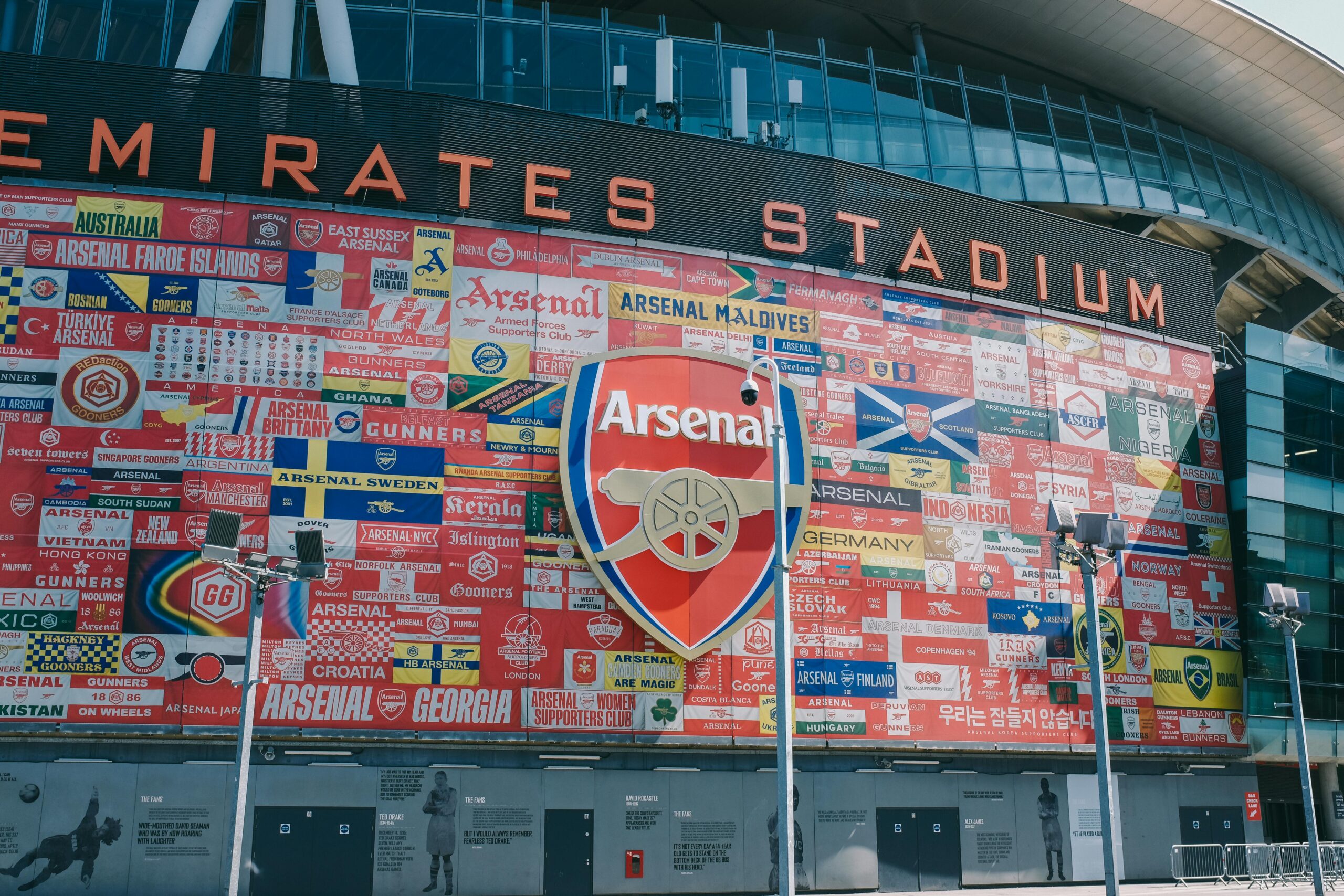
APFA
March 20, 2025
A Tactical Breakdown: Arsenal 1 vs Chelsea 0
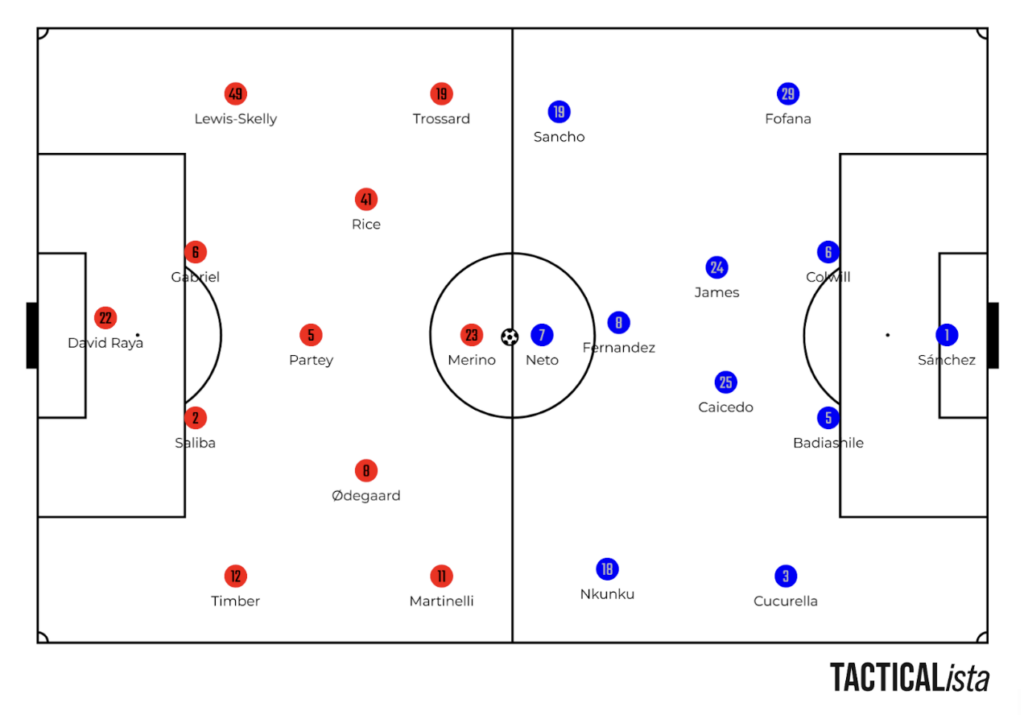
The lineup of Chelsea XI and Arsenal XI
Arsenal XI 4-1-2-3
Chelsea XI 4-2-3-1
The second-leg clash at the Emirates Stadium saw Enzo Marasca and Mikel Arteta heavily influenced by Pep Guardiola go head-to-head. Both Arteta and Pochettino are known for their strict positional play and share a preference for a 3-2-2-3 shape in possession.
A key similarity between the sides was their experimentation with unorthodox strikers, relying on fluid attacking movements rather than traditional centre-forwards. Additionally, both teams’ goals came from different players, reflecting their emphasis on collective attacking contributions rather than relying on a single goal scorer.
However, their pressing approaches differed significantly. Arsenal varied their press, shifting between high and low blocks, using man-to-man pressing that transformed into a 4-4-2 shape when defending deeper. Chelsea, on the other hand, maintained a strict man-to-man pressing system, ensuring a +1 advantage in defence to maintain numerical superiority at the back. This contrast in defensive strategies shaped the tactical battle between the two sides.
(0-15 minutes)
How Arsenal build-up, Chelsea Fragile in High Press, Minutes 1
David Raya acted as the third centre-back, giving Arsenal an 11 vs. 10 numerical superiority in possession. As Ødegaard and Rice dropped deeper, they dragged James and Caicedo, creating a large gap in front of Chelsea’s defensive line. Merino, operating as a false nine, exploited this space by dropping in and carrying the ball forward. Raya functioned as a progressive passer, while Merino capitalised on the open space. Meanwhile, Arsenal’s wingers, Martinelli and Trossard, moved inside, pinning Chelsea’s three centre-backs. This positioning indicated Chelsea’s intent to maintain a +1 defensive security.
Chelsea faced a dilemma: if they tracked the between-the-lines players (Ødegaard and Rice), they risked opening up dangerous spaces. However, if they held their positions, they overloaded their defensive area, making it easier for Arsenal to bypass their press.
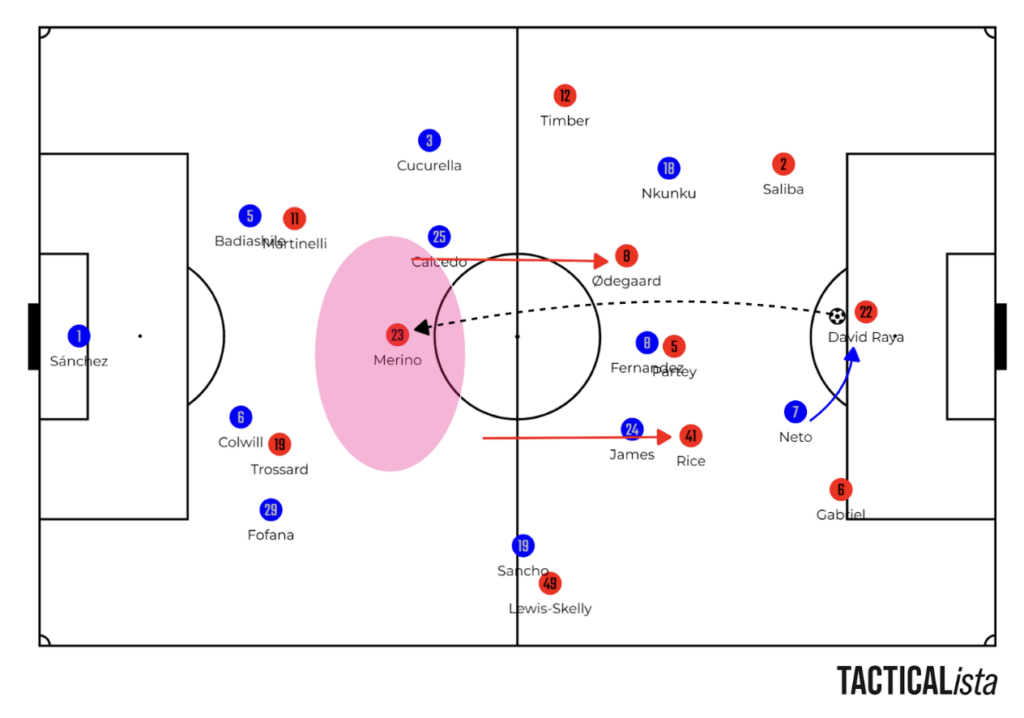
How Arsenal broke the high press of Chelsea
Chelsea Build Up Problems
A high press is most effective in the early stages of a game, and Arsenal implemented it using a 4-1-4-1 structure. Their pressing approach forced Arsenal towards the flanks. Merino targeted Chelsea’s right-sided centre-back, Colwill, who is more comfortable on the ball, while Ødegaard applied pressure with shadow cover on Caicedo. Rice was also primed to step up and press. As Merino cut the right side Martinelli marked Cucurella tightly and Party covered the midfield area and intercepted the pass of centre back.
However, Chelsea’s main defensive issue arose after losing possession. With both centre-backs positioned wide, they struggled to maintain compactness, leaving gaps that Arsenal could exploit in transition.
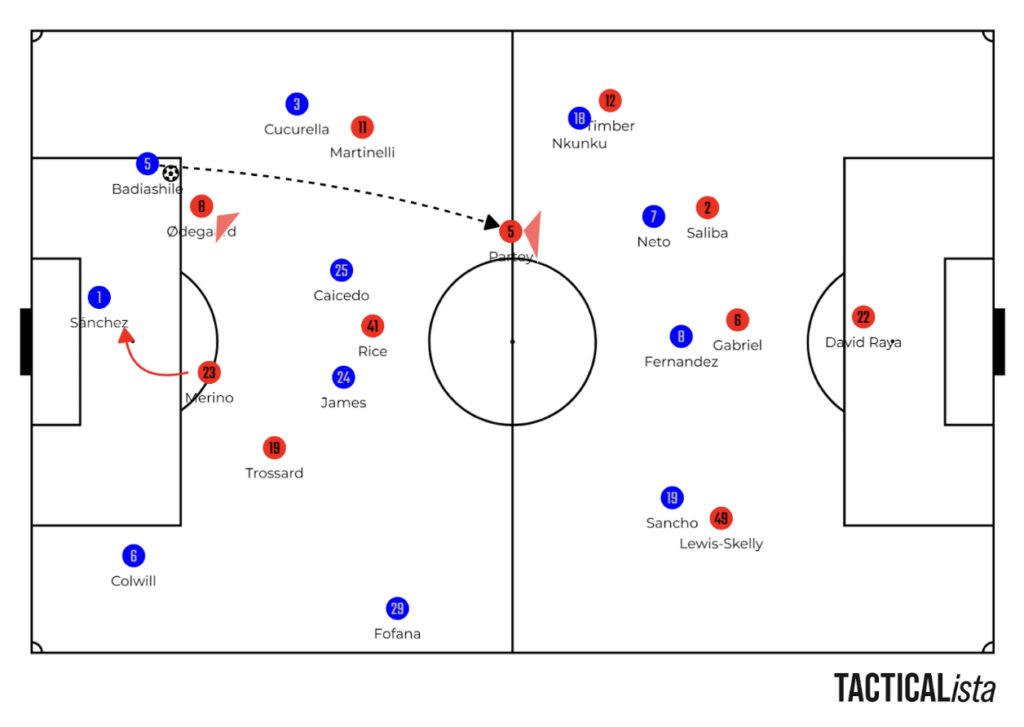
How Arsenal won the ball and counterattack with a 4-1-4-1 pressing shape
Arsenal Created the Chance with a Righthand Overload Side Middle Third to Final Third.
Nkunku pressed Saliba from outside to inside, attempting to shadow-cover Timber. In response, Saliba played a pass to Ødegaard, who then accessed the free man, Timber, through a well-executed third-man combination. However, this press inadvertently allowed Martinelli to pin Cucurella, preventing him from stepping out. As a result, Timber found time and space to advance, enabling Arsenal to overload the right-hand side, a major issue for Chelsea’s defensive structure. This imbalance forced Chelsea to shift across, leaving gaps elsewhere, or risk being outnumbered on their left flank. If Cucurella stepped forward to engage Timber, it would open the channel for Martinelli to exploit, further stretching Chelsea’s defensive shape and creating dangerous attacking opportunities for Arsenal.
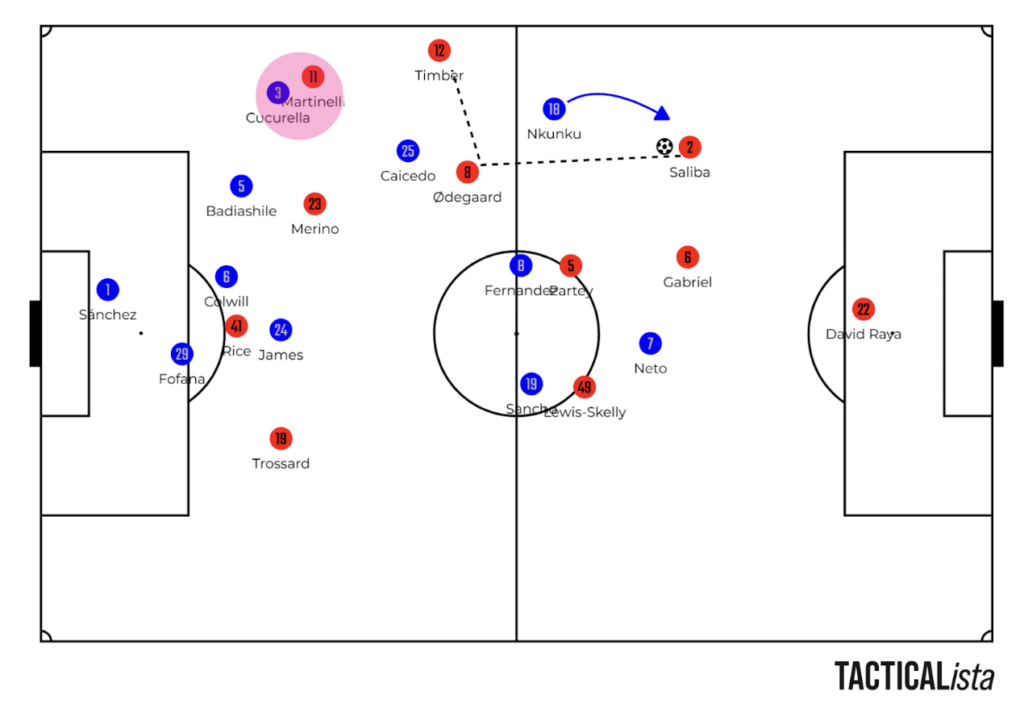
Arsenal overloaded on the right-hand side and tried to attack the channel space, which was difficult for Chelsea to defend
In the first 15 minutes Arsenal dominated the game creating 4 chances with 65% possession.
(15-30 Minutes)
Arsenal Pressured on the Right-Side Overload but Scored a Goal in Their Innovative Corner.
In the 19th minute, Arsenal scored from an innovative corner routine. Most of their players crowded the near post, obstructing Sánchez’s view. Merino capitalized on this setup, scoring from the near post, while Saliba effectively blocked his marker, Enzo Fernández. Reece James was tasked with man-marking Merino, but the combination of movement and blocking made it difficult for him to track both the ball and his man. Using his physicality, Merino overpowered his marker, creating just enough separation to meet the delivery and finish decisively. This well-executed set piece exposed Chelsea’s defensive vulnerabilities.
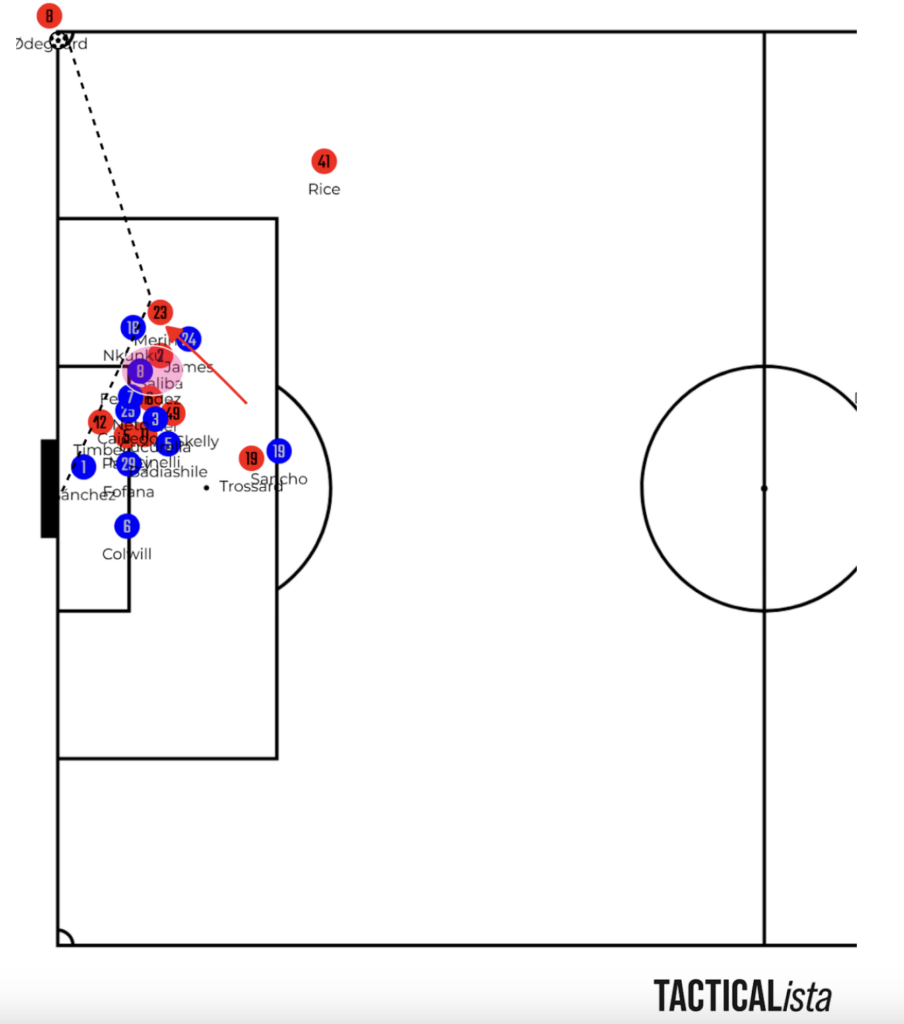
Arsenal Trigger Press When Chelsea Back Pass
Chelsea attempted to build up in a 3-2-2-3 shape, with Cucurella pushing higher as a winger and Nkunku inverting into the half-space. In response, Arsenal set up in a 4-2-4 midblock, aiming to control central areas and dictate Chelsea’s passing options.
When Cucurella played the ball back to Badiashile, Arsenal’s pressing trigger was activated. Merino positioned himself to cover both James and Caicedo, limiting Chelsea’s options. Meanwhile, Ødegaard and Trossard pressed from outside to inside, forcing Chelsea to play centrally, where Arsenal could apply compact pressure.
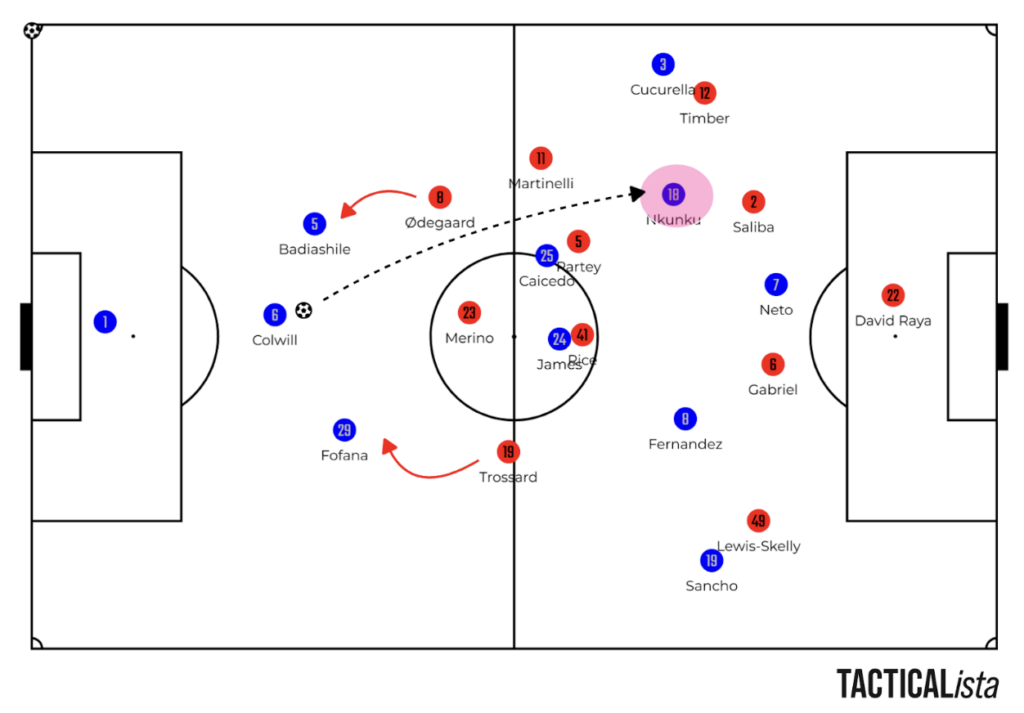
Colwill attempted to progress the ball by playing into the left half-space towards Nkunku. However, Nkunku’s body orientation was facing his own goal, preventing him from executing a quick or dangerous pass into the channel for Neto. This hesitation allowed Arsenal to close down space effectively, disrupting Chelsea’s build-up and preventing them from advancing with intent.
Chelsea adjusted their pressing approach, while Arsenal implemented a La Salida Volpe build-up, with Partey dropping deep to form a back three. This created a 3v2 advantage against Chelsea’s forward line, allowing Arsenal to progress the ball with numerical superiority.
Martinelli positioned himself between the lines, while Timber pushed higher as a winger, contributing to an overload on the right side. However, Arsenal struggled to capitalise on this advantage due to Colwill’s timely defensive intervention, which disrupted their progression and prevented them from fully exploiting the wide overload.
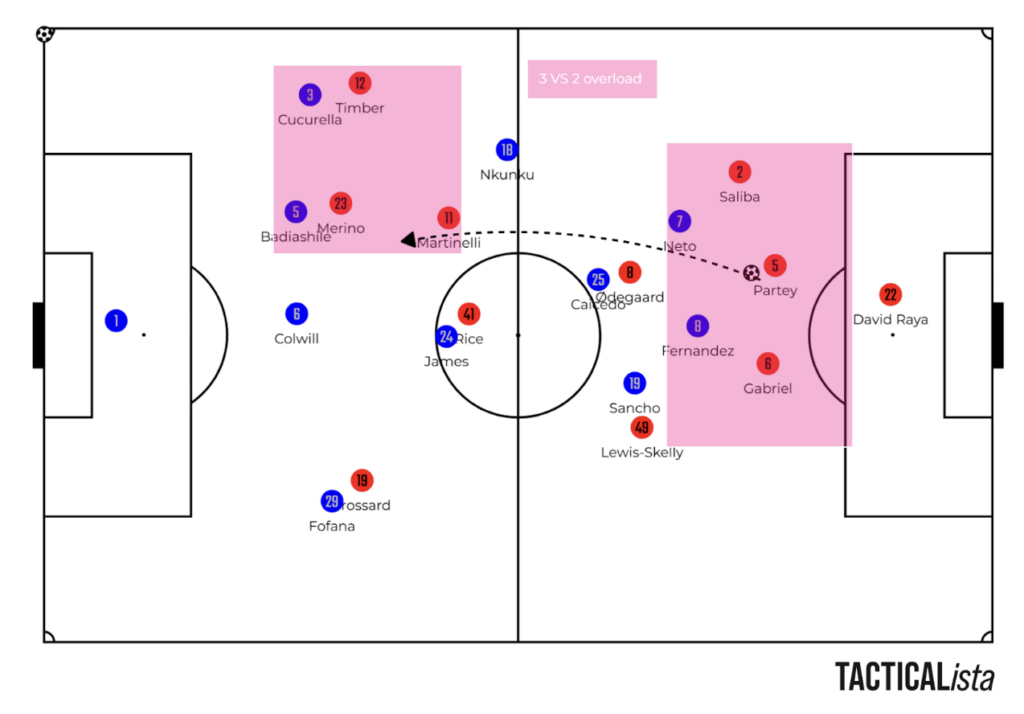
(30-45 Minutes)
In this quarter, Chelsea adjusted their structure from a 3-2-2-3 to a 3-1-3-3, aiming to overload the midfield against Arsenal’s 4-2-4 shape. This shift allowed Chelsea to create numerical superiority in central areas, helping them dictate possession and manipulate Arsenal’s defensive shape. May be a risk if they miss passed its becomes a 4vs3 situation.Their approach focused on shuffling Arsenal’s defence, either to open new passing lanes or to patiently wait for an opportunity to play a long ball behind Arsenal’s defensive line, particularly into the wide areas. This vertical stretching of Arsenal’s defensive structure created the first great chance of the game for Chelsea. As a result, Chelsea gained greater control, dominating possession and increasing their ball retention to 77%, significantly influencing the game’s tempo and positioning Arsenal deeper into their half.
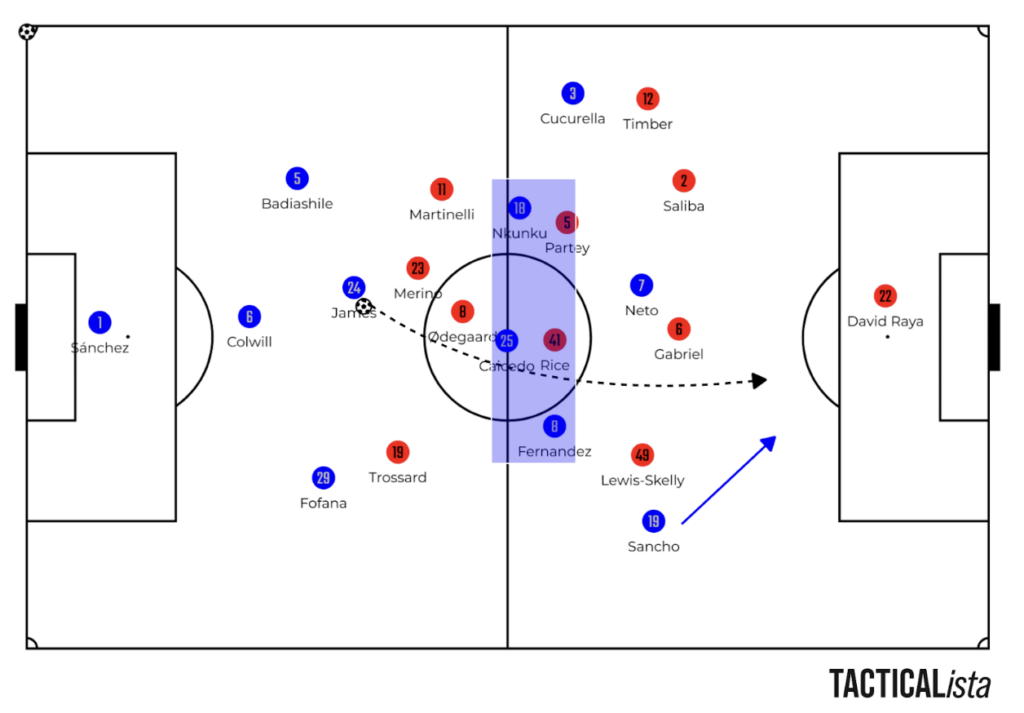
In the final third, Arsenal’s defensive shape often resembled a 6-4, with Rice and Partey dropping deeper to cover the channel spaces. This adjustment aimed to limit Chelsea’s ability to progress centrally and force them into wider, less threatening areas.
(45-60 Minutes)
Chelsea deployed a man-to-man midblock with a +1 advantage in the back, which meant they were -1 in the forward line. This imbalance allowed Arsenal to easily bypass Chelsea’s press, with Gabriel carrying the ball forward and overloading the left-hand side.Arsenal’s rotational movements in this area enabled them to dominate possession and find spaces effectively. After halftime, they regained control of the game, leading to a great goalscoring opportunity, which was denied by a crucial save from Sánchez. Chelsea’s compactness became a major issue, as their defensive shape struggled to cope with Arsenal’s dynamic positional play, making it difficult to regain control in key areas.
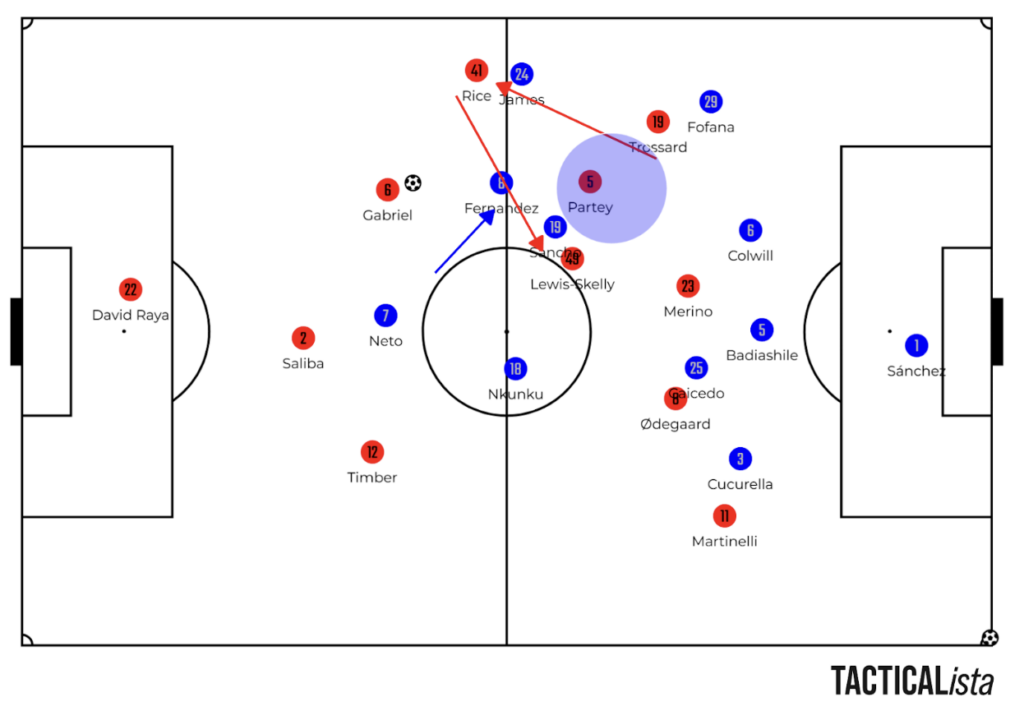
(60-90 Minutes)
Same game Arsenal dominated, and Chelsea created a lack of opportunity due to their lack of penetration and Arsenal’s possession movement.
Chelsea’s Problem Throughout the Game
Arsenal’s defensive shape-shifted from a deep 4-4-2 to a 4-2-4, with pressing triggers being extremely important. The wide wingers, Trossard and Martinelli, executed these triggers excellently, tracking back at the right moments to support their midfield or full-backs and prevent Chelsea from creating overloads.
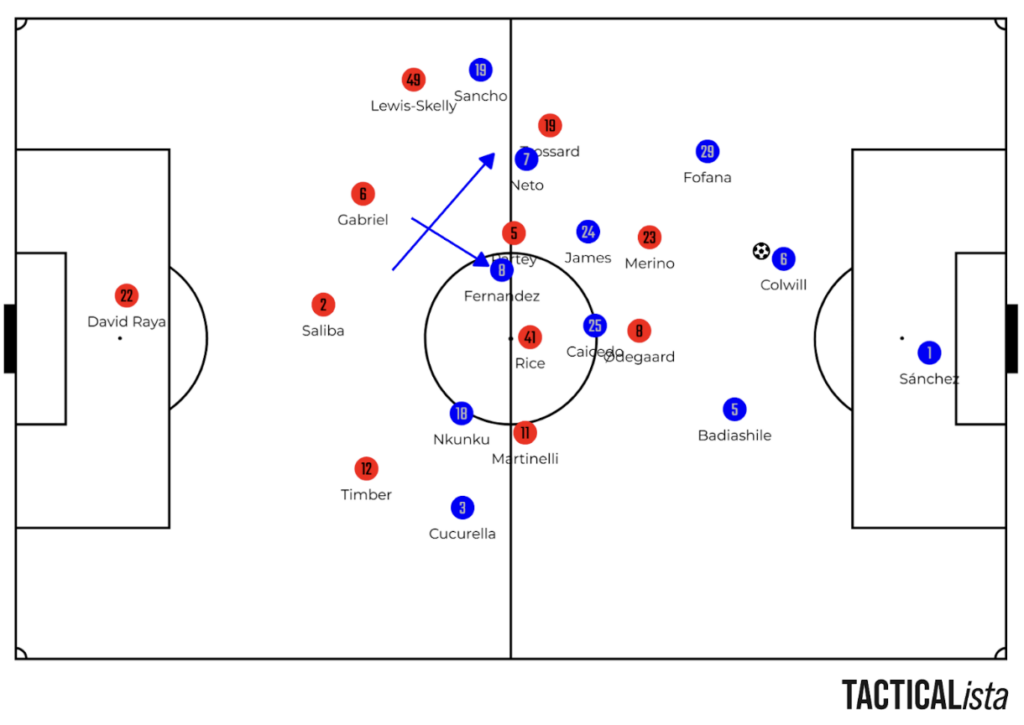
To counter this, Chelsea increased their numbers in the build-up, bringing Enzo and Neto deeper to provide support. However, this adjustment came at the cost of losing penetration in advanced areas. Neto, who initially started centrally, gradually drifted wider, further limiting Chelsea’s ability to break through Arsenal’s defensive lines and create direct goal-scoring opportunities.
Arsenal Out of Possession Plan
Arsenal showcased excellent adaptability, shifting seamlessly between a high press and a deep defensive setup. Their ability to adjust based on the game situation highlights a key evolution in Mikel Arteta’s tactical approach.
While Pep Guardiola’s influence is evident in Arteta’s philosophy, his willingness to adapt and prioritize pragmatism sets him apart. Unlike Guardiola, who often sticks to a dominant possession-based style, Arteta’s Arsenal can fluidly transition between pressing high and defending deep, making them more versatile and unpredictable in different match scenarios.
Written by APFA Member, Sourabh Banerjee
Want to Break Down a Game as Expertly as Sourabh Does in This Article?
Our online courses offer unmatched guidance across key areas of football analysis, helping you sharpen your skills and earn a certification to advance your development as an analyst.
